
Francisco de Goya Giclée Fine Art Prints 1 of 2
1746-1828
Spanish Rococo/Romanticism Painter
Goya comes from an ordinary family. His father was a master goldsmith in Zaragoza and a peasant by birth. The legends created around Goya's personality speak of an unusually adventurous youth. The artist fled Zaragoza, leaving the city in the same way he would leave Madrid a few years later. From here he went to Italy, the land dreamed of and contemplated by all artists. Soon after his return to his homeland, he received important commissions. He was commissioned to produce for the court tapestry workshop the cartouches-projects on which carpets and tapestries were later woven. He worked with great love and filled his cartouches with the idealized figures of the Spanish people in a slight puppet-like stiffness. Girls and boys dressed in festive national costumes appear in a flamboyant crowd in Goya's paintings. At this time he was also commissioned for other works. He painted many portraits, but did not embellish out of politeness even his highest-ranking clients. Goya's connections with the palace did not prevent him from sympathizing with the ideas of the Enlightenment invading from France.
In his twenties, the painter, who had lived a carefree life until then, was struck down by illness. His hearing weakened, and later he went completely deaf. His wife and two children died, and the lonely artist began to take an interest in subjects that it was more prudent to retreat to between the four walls of his home to save himself from the fury of the Spanish monarchy and church, which were fighting with all their might against the ideas of the Enlightenment. Then, among other things, Goya painted The Session of the Court of the Inquisition, this picture depicting organized horror. The calamities that had fallen upon the country, the contradiction between the misery of the people and the glittering splendour of the palace, the fanaticism of the clergy, the desire of the ministers to oppress the people, deeply moved the refined sensibility of the painter. In his magnificent etchings - which he called "Caprichos" ("Fancies") - Goya recounts all that preoccupied him at the time. On the opening page, where monsters swarm around the sleeping artist, he writes: "The Sleep of Reason Produces Monsters." (Later, the cover was altered, and a self-portrait appeared in place of the original image.) On these pages - and later in his other graphic series, as well as in some paintings - the great master expresses what he has to say in a completely original way. He disguises his thoughts behind monstrous and demonic figures conjured up from his own imagination, above all in order to veil their true meaning, their revolutionary, even anticlerical hints, so that only those close to his worldview can understand it.
Goya was the first court painter and president of the Academy when history again disturbed his tranquil work. In 1808, Napoleon invaded Spain and proclaimed his brother King of Spain. On May 2, 1808, the Spanish people revolted against the foreign ruler. In order to put down the uprising, the French Marshal Moura liquidated several thousand Spaniards. Thus broke out the years-long war for Spanish independence. When Goya, who had originally sympathized with French revolutionary ideas, saw that the conquering French army, which had changed its revolutionary principles, was invading his homeland, he supported the people's struggle with all the means of his art. He painted the innocently executed heroes of the uprising of 1808 and painted the graphic series "The Disasters of War" (in Spanish "Desastros de la Guerra"). In it, he shows the futility and cruelty of war and raises an all-time valid voice of protest against the horrors threatening humanity. Alongside this, he also perpetuates the heroism of a people fighting for their independence. Interestingly, almost a hundred years after Goya's death, the idea of protest against senseless, sinful war was picked up again by a Spanish artist in the person of Picasso, who, with his remarkable composition Guernica, raised his voice against fascism. Goya's spiritual legacy thus fruitfully influences the painting of our time. The Spanish struggle for independence ended after four years and the French were forced to withdraw. The new King Ferdinand VII, however, continued the policy of oppression. Goya lived for a long time without taking any part in public life. Surrounded by the monsters painted on the walls of his home, he struggled with both illness and despair. The Spanish uprising that broke out in 1820 was put down by European reaction. Goya felt that there was no longer any place for him in his homeland and went as a voluntary exile to French soil; he resettled in Bordeaux. At this time a certain serenity creeps into his life. Among other things, this can be seen in his domestic paintings, "The Water Bearer" and "Knife Grinder," in which he again depicts with warm sympathy the sons and daughters of the common Spanish people.
One of the greatest painters of the Spanish people died on French soil. His creative legacy lives on in the history of French painting. Impressionism, which emerged in the 1970s, considers him its forerunner The progenitor of this movement, Édouard Manet, looked to Goya as his teacher. Goya's understanding of painting, the form-breaking breadth of his brushwork, his entire oeuvre became one of the important starting points of modern art. Goya the painter is a model of the humanist artist.
In his twenties, the painter, who had lived a carefree life until then, was struck down by illness. His hearing weakened, and later he went completely deaf. His wife and two children died, and the lonely artist began to take an interest in subjects that it was more prudent to retreat to between the four walls of his home to save himself from the fury of the Spanish monarchy and church, which were fighting with all their might against the ideas of the Enlightenment. Then, among other things, Goya painted The Session of the Court of the Inquisition, this picture depicting organized horror. The calamities that had fallen upon the country, the contradiction between the misery of the people and the glittering splendour of the palace, the fanaticism of the clergy, the desire of the ministers to oppress the people, deeply moved the refined sensibility of the painter. In his magnificent etchings - which he called "Caprichos" ("Fancies") - Goya recounts all that preoccupied him at the time. On the opening page, where monsters swarm around the sleeping artist, he writes: "The Sleep of Reason Produces Monsters." (Later, the cover was altered, and a self-portrait appeared in place of the original image.) On these pages - and later in his other graphic series, as well as in some paintings - the great master expresses what he has to say in a completely original way. He disguises his thoughts behind monstrous and demonic figures conjured up from his own imagination, above all in order to veil their true meaning, their revolutionary, even anticlerical hints, so that only those close to his worldview can understand it.
Goya was the first court painter and president of the Academy when history again disturbed his tranquil work. In 1808, Napoleon invaded Spain and proclaimed his brother King of Spain. On May 2, 1808, the Spanish people revolted against the foreign ruler. In order to put down the uprising, the French Marshal Moura liquidated several thousand Spaniards. Thus broke out the years-long war for Spanish independence. When Goya, who had originally sympathized with French revolutionary ideas, saw that the conquering French army, which had changed its revolutionary principles, was invading his homeland, he supported the people's struggle with all the means of his art. He painted the innocently executed heroes of the uprising of 1808 and painted the graphic series "The Disasters of War" (in Spanish "Desastros de la Guerra"). In it, he shows the futility and cruelty of war and raises an all-time valid voice of protest against the horrors threatening humanity. Alongside this, he also perpetuates the heroism of a people fighting for their independence. Interestingly, almost a hundred years after Goya's death, the idea of protest against senseless, sinful war was picked up again by a Spanish artist in the person of Picasso, who, with his remarkable composition Guernica, raised his voice against fascism. Goya's spiritual legacy thus fruitfully influences the painting of our time. The Spanish struggle for independence ended after four years and the French were forced to withdraw. The new King Ferdinand VII, however, continued the policy of oppression. Goya lived for a long time without taking any part in public life. Surrounded by the monsters painted on the walls of his home, he struggled with both illness and despair. The Spanish uprising that broke out in 1820 was put down by European reaction. Goya felt that there was no longer any place for him in his homeland and went as a voluntary exile to French soil; he resettled in Bordeaux. At this time a certain serenity creeps into his life. Among other things, this can be seen in his domestic paintings, "The Water Bearer" and "Knife Grinder," in which he again depicts with warm sympathy the sons and daughters of the common Spanish people.
One of the greatest painters of the Spanish people died on French soil. His creative legacy lives on in the history of French painting. Impressionism, which emerged in the 1970s, considers him its forerunner The progenitor of this movement, Édouard Manet, looked to Goya as his teacher. Goya's understanding of painting, the form-breaking breadth of his brushwork, his entire oeuvre became one of the important starting points of modern art. Goya the painter is a model of the humanist artist.
28 Goya Artworks
Page 1 of 2

Giclée Canvas Print
$66.34
$66.34
SKU: 19918-GOY
Francisco de Goya
Original Size:45 x 62 cm
Oskar Reinhart Museum, Winterthur, Switzerland
Francisco de Goya
Original Size:45 x 62 cm
Oskar Reinhart Museum, Winterthur, Switzerland

Giclée Canvas Print
$83.85
$83.85
SKU: 17195-GOY
Francisco de Goya
Original Size:74 x 68 cm
Prado Museum, Madrid, Spain
Francisco de Goya
Original Size:74 x 68 cm
Prado Museum, Madrid, Spain

Giclée Canvas Print
$61.72
$61.72
SKU: 19580-GOY
Francisco de Goya
Original Size:131 x 79 cm
Prado Museum, Madrid, Spain
Francisco de Goya
Original Size:131 x 79 cm
Prado Museum, Madrid, Spain
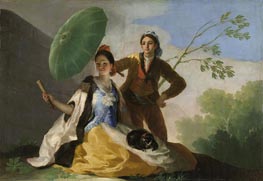
Giclée Canvas Print
$64.12
$64.12
SKU: 16843-GOY
Francisco de Goya
Original Size:104 x 152 cm
Prado Museum, Madrid, Spain
Francisco de Goya
Original Size:104 x 152 cm
Prado Museum, Madrid, Spain

Giclée Canvas Print
$71.95
$71.95
SKU: 16852-GOY
Francisco de Goya
Original Size:268 x 347 cm
Prado Museum, Madrid, Spain
Francisco de Goya
Original Size:268 x 347 cm
Prado Museum, Madrid, Spain

Giclée Canvas Print
$84.53
$84.53
SKU: 14765-GOY
Francisco de Goya
Original Size:116 x 105 cm
Prado Museum, Madrid, Spain
Francisco de Goya
Original Size:116 x 105 cm
Prado Museum, Madrid, Spain

Giclée Canvas Print
$61.72
$61.72
SKU: 16855-GOY
Francisco de Goya
Original Size:140.5 x 435.7 cm
Prado Museum, Madrid, Spain
Francisco de Goya
Original Size:140.5 x 435.7 cm
Prado Museum, Madrid, Spain

Giclée Canvas Print
$61.72
$61.72
SKU: 16848-GOY
Francisco de Goya
Original Size:41.8 x 43.8 cm
Prado Museum, Madrid, Spain
Francisco de Goya
Original Size:41.8 x 43.8 cm
Prado Museum, Madrid, Spain

Giclée Canvas Print
$61.72
$61.72
SKU: 16853-GOY
Francisco de Goya
Original Size:125 x 261 cm
Prado Museum, Madrid, Spain
Francisco de Goya
Original Size:125 x 261 cm
Prado Museum, Madrid, Spain

Giclée Canvas Print
$80.15
$80.15
SKU: 14767-GOY
Francisco de Goya
Original Size:98 x 191 cm
Prado Museum, Madrid, Spain
Francisco de Goya
Original Size:98 x 191 cm
Prado Museum, Madrid, Spain

Giclée Canvas Print
$61.72
$61.72
SKU: 16854-GOY
Francisco de Goya
Original Size:45.8 x 35.6 cm
Prado Museum, Madrid, Spain
Francisco de Goya
Original Size:45.8 x 35.6 cm
Prado Museum, Madrid, Spain

Giclée Canvas Print
$62.25
$62.25
SKU: 14766-GOY
Francisco de Goya
Original Size:143.5 x 81.4 cm
Prado Museum, Madrid, Spain
Francisco de Goya
Original Size:143.5 x 81.4 cm
Prado Museum, Madrid, Spain

Giclée Canvas Print
$66.34
$66.34
SKU: 16845-GOY
Francisco de Goya
Original Size:277 x 192 cm
Prado Museum, Madrid, Spain
Francisco de Goya
Original Size:277 x 192 cm
Prado Museum, Madrid, Spain

Giclée Canvas Print
$75.34
$75.34
SKU: 17995-GOY
Francisco de Goya
Original Size:64.3 x 52.4 cm
National Gallery, London, UK
Francisco de Goya
Original Size:64.3 x 52.4 cm
National Gallery, London, UK
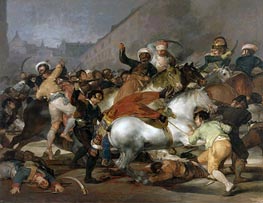
Giclée Canvas Print
$72.29
$72.29
SKU: 16851-GOY
Francisco de Goya
Original Size:268.5 x 347.5 cm
Prado Museum, Madrid, Spain
Francisco de Goya
Original Size:268.5 x 347.5 cm
Prado Museum, Madrid, Spain

Giclée Canvas Print
$64.46
$64.46
SKU: 19198-GOY
Francisco de Goya
Original Size:121 x 84.5 cm
Museum of Fine Arts, Budapest, Hungary
Francisco de Goya
Original Size:121 x 84.5 cm
Museum of Fine Arts, Budapest, Hungary
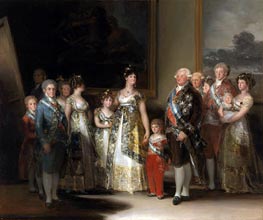
Giclée Canvas Print
$78.24
$78.24
SKU: 16850-GOY
Francisco de Goya
Original Size:280 x 336 cm
Prado Museum, Madrid, Spain
Francisco de Goya
Original Size:280 x 336 cm
Prado Museum, Madrid, Spain

Giclée Canvas Print
$86.24
$86.24
SKU: 16846-GOY
Francisco de Goya
Original Size:275 x 293 cm
Prado Museum, Madrid, Spain
Francisco de Goya
Original Size:275 x 293 cm
Prado Museum, Madrid, Spain

Giclée Canvas Print
$61.72
$61.72
SKU: 17998-GOY
Francisco de Goya
Original Size:42.5 x 30.8 cm
National Gallery, London, UK
Francisco de Goya
Original Size:42.5 x 30.8 cm
National Gallery, London, UK
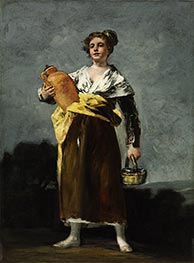
Giclée Canvas Print
$68.89
$68.89
SKU: 19200-GOY
Francisco de Goya
Original Size:68 x 50.5 cm
Museum of Fine Arts, Budapest, Hungary
Francisco de Goya
Original Size:68 x 50.5 cm
Museum of Fine Arts, Budapest, Hungary

Giclée Canvas Print
$61.72
$61.72
SKU: 19199-GOY
Francisco de Goya
Original Size:191 x 106 cm
Prado Museum, Madrid, Spain
Francisco de Goya
Original Size:191 x 106 cm
Prado Museum, Madrid, Spain

Giclée Canvas Print
$61.91
$61.91
SKU: 17996-GOY
Francisco de Goya
Original Size:82 x 54.6 cm
National Gallery, London, UK
Francisco de Goya
Original Size:82 x 54.6 cm
National Gallery, London, UK

Giclée Canvas Print
$79.60
$79.60
SKU: 19197-GOY
Francisco de Goya
Original Size:259 x 220 cm
Prado Museum, Madrid, Spain
Francisco de Goya
Original Size:259 x 220 cm
Prado Museum, Madrid, Spain
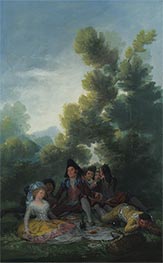
Giclée Canvas Print
$61.72
$61.72
SKU: 17999-GOY
Francisco de Goya
Original Size:41.3 x 25.8 cm
National Gallery, London, UK
Francisco de Goya
Original Size:41.3 x 25.8 cm
National Gallery, London, UK